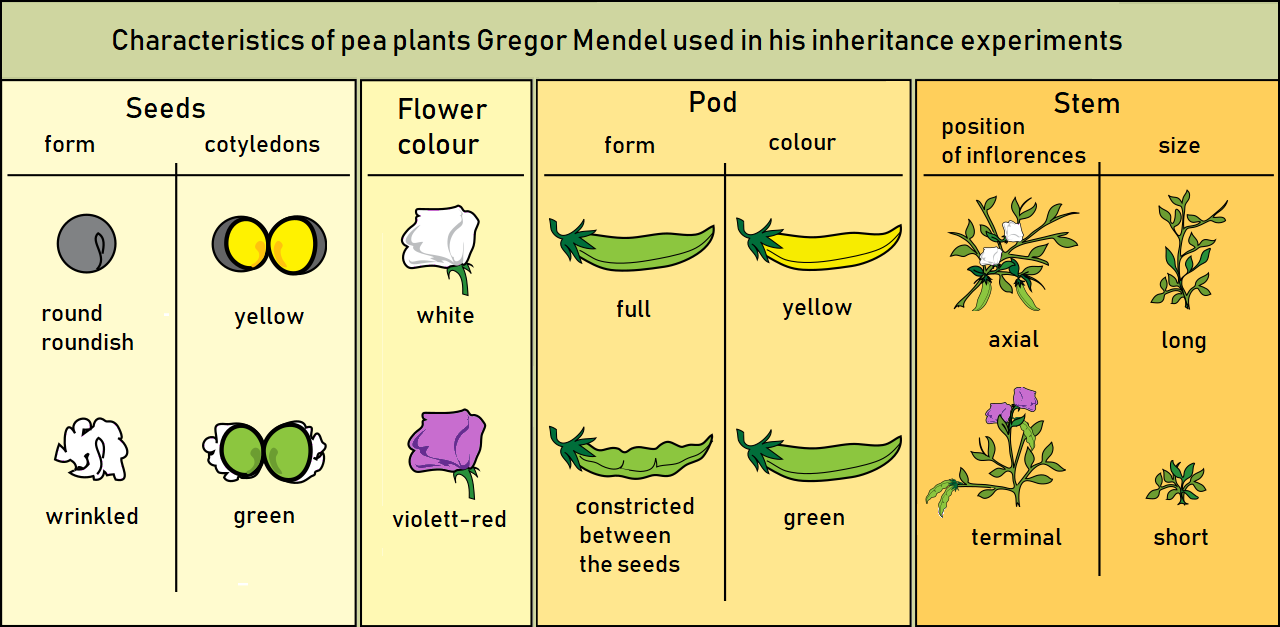Mendel's experiments
Gregor Mendel (original given name Jan Řehoř) was born in 1822 in Hynčice u Vražného (Moravian-Silesian region) in a family of German-speaking farmers. From 1840 to 1843 he studied at the Faculty of Philosophy in Olomouc. In 1843 he entered the Augustinian monastery in Brno. As a monk, he continued his university education in Vienna, where he studied mathematics, chemistry, meterology, paleontology, and zoology. After returning to the Brno monastery, in the years 1856 – 1863, he systematically devoted himself to the crossbreeding of peas (Pisum sativum) and the mathematical evaluation of the combination of parental traits (parental generation) in the offspring (F1, F2, F3 generations). In 1868 he became an abbot and had no more time for experiments. He died in 1884 in Brno Augustinian monastery, where he's also buried.
On the basis of his university studies, Mendel realized the importance of mathematics and statistics for understanding natural events. He was a pioneer in connecting mathematical methods with biological research. For his experiments, he used peas, in which he observed several different traits. He set certain rules for hybridization experiments, e.g. - the parental generation was always a pure line for a certain trait, crossing between F1 and F2 generation individuals took place using self-pollination, etc. He formulated the basic rules of heredity (Mendel's laws of inheritance) using a statistical evaluation of the characteristics of parent plants and hybrids arising in subsequent generations. He defined these rules, which are still the basis of formal genetics, without knowledge of meiotic division, the existence of chromosomes or genes. He published the results of his hybridization experiments that were in accordance with his statistical theorem in 1866 - "Versuche über Pflanzen-Hybriden" (Experiments with plant hybrids)
Tracked trait combinations were:
- Seed form: round/wrinkled
- Cotyledon color: yellow/green
- Flower color: white/violet
- Pod form: full/constricted
- Pod color: yellow/green
- Position of inflorescences on the stem: axial/terminal
- Stem size: long/short
In the following years, he chose Hawkweed from the Astraceae family for his hybridization experiments. However, these plants have apomictic reproduction, i.e. germinating seeds are produced without pollination of flowers. And so the offspring is genetically identical to the parent plant. Based on the results of these experiments, Mendel came to believe that the conclusions defined on the basis of experiments with peas are not generally valid. The contribution of Mendel's conclusions to biology was not appreciated until the beginning of the 20th century; The credit for their "rediscovery" goes mainly to W. Bateson.


